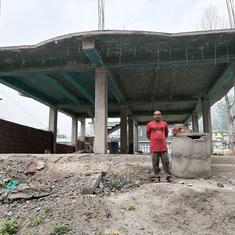RBI cuts repo rate by 25 basis points to 6.25%
This was the first cut initiated by the central bank since May 2020, when it had slashed rates by 40 basis points.

The Reserve Bank of India’s Monetary Policy Committee on Friday cut the repo rate by 25 basis points, lowering it to 6.25% from 6.5%.
This was the first rate cut initiated by the central bank in five years. The last rate cut was announced in May 2020, when the Reserve Bank slashed rates by 40 basis points to counter the adverse economic impact of the Covid-19 pandemic.
The repo rate is the interest rate at which the central bank lends money to commercial banks. The Monetary Policy Committee decides on changes to it every two months.
A basis point is one-hundredth of a percentage point. Basis points are used to describe the percentage change in the value of a financial instrument.
Central banks usually reduce repo rates to stimulate economic growth by making borrowing cheaper for individuals and businesses. This translates to lower equated monthly instalments, or EMIs, for borrowers.
The Monetary Policy Committee was unanimous in its decision to cut the repo rates in its 53rd meeting held from Wednesday to Friday. The committee also decided to continue with the neutral monetary policy stance, focusing on aligning inflation targets while supporting growth.
“These decisions are in consonance with the objective of achieving the medium-term target for consumer price index inflation of 4% within a band of +/- 2%, while supporting growth,” the RBI stated in a press release.
A neutral stance means that the Reserve Bank remained flexible in adjusting policy rates based on prevailing economic conditions.
The Reserve Bank of India is tasked with keeping inflation at 4%, with a tolerance band between 2% and 6%. In October, the inflation rate crossed the tolerance cap of 6% for the first time since August 2023.
“The interest of the economy demands financial stability and consumer protection, and our mandate at the RBI is to ensure both of them,” said Sanjay Malhotra, the governor of the central bank.
He added: “We recognise that just like there are no free lunches, that regulations for enhancing financial stability and customer protection also come with costs.”
The RBI governor also stated that while the Indian economy remains strong and resilient, it has faced pressure, with the rupee impacted by global challenges.
The Indian rupee weakened to an all-time low of 87.58 per dollar on Thursday. The depreciation was primarily driven by the exit of foreign investors from India.
Regarding real Gross Domestic Product, Malhotra said that the Reserve Bank expects the growth rate to be at 6.7% in the next financial year with balanced risks.
On December 30, the Reserve Bank said that India’s economy was demonstrating resilience and stability, and projected GDP growth at 6.6% in 2024-’25.









